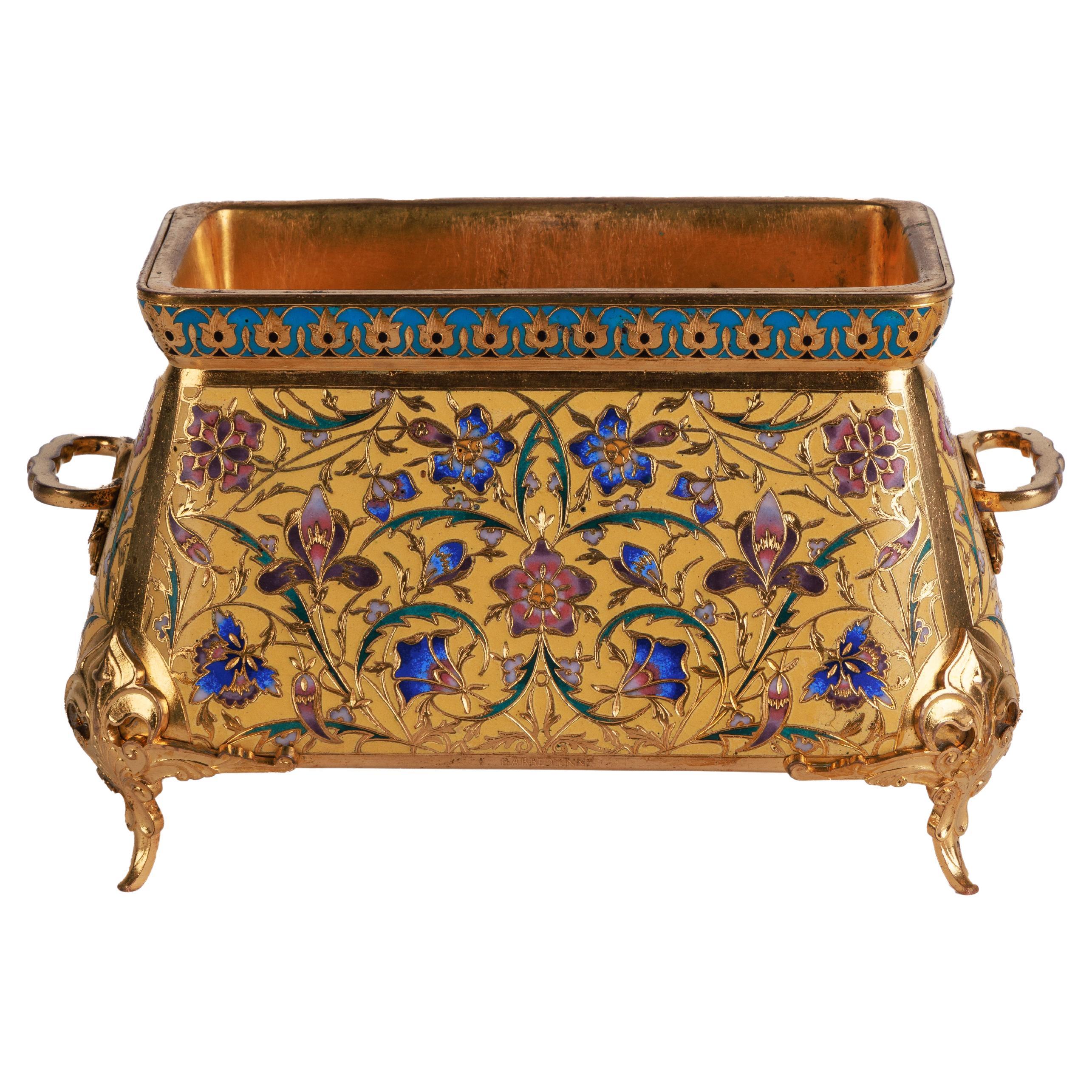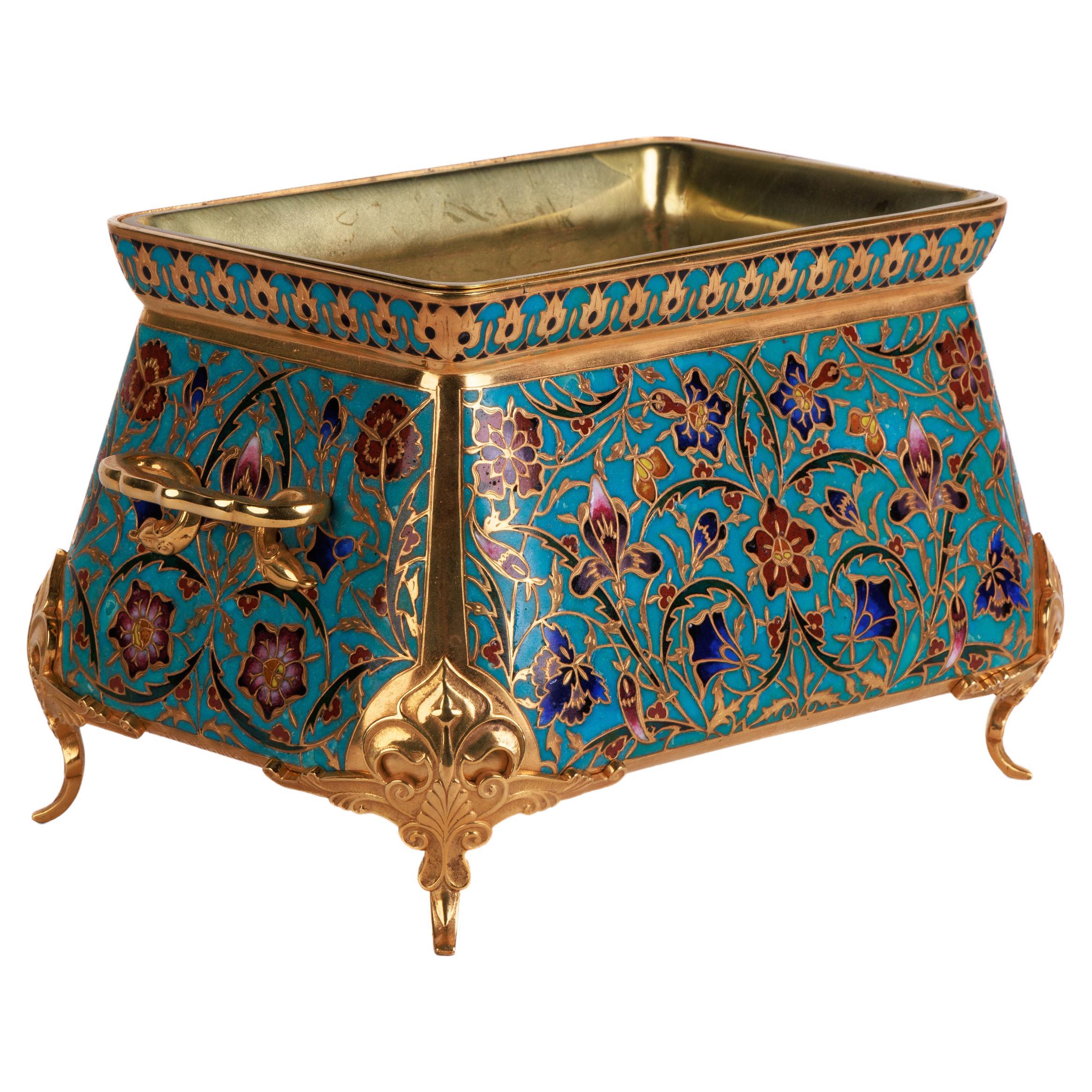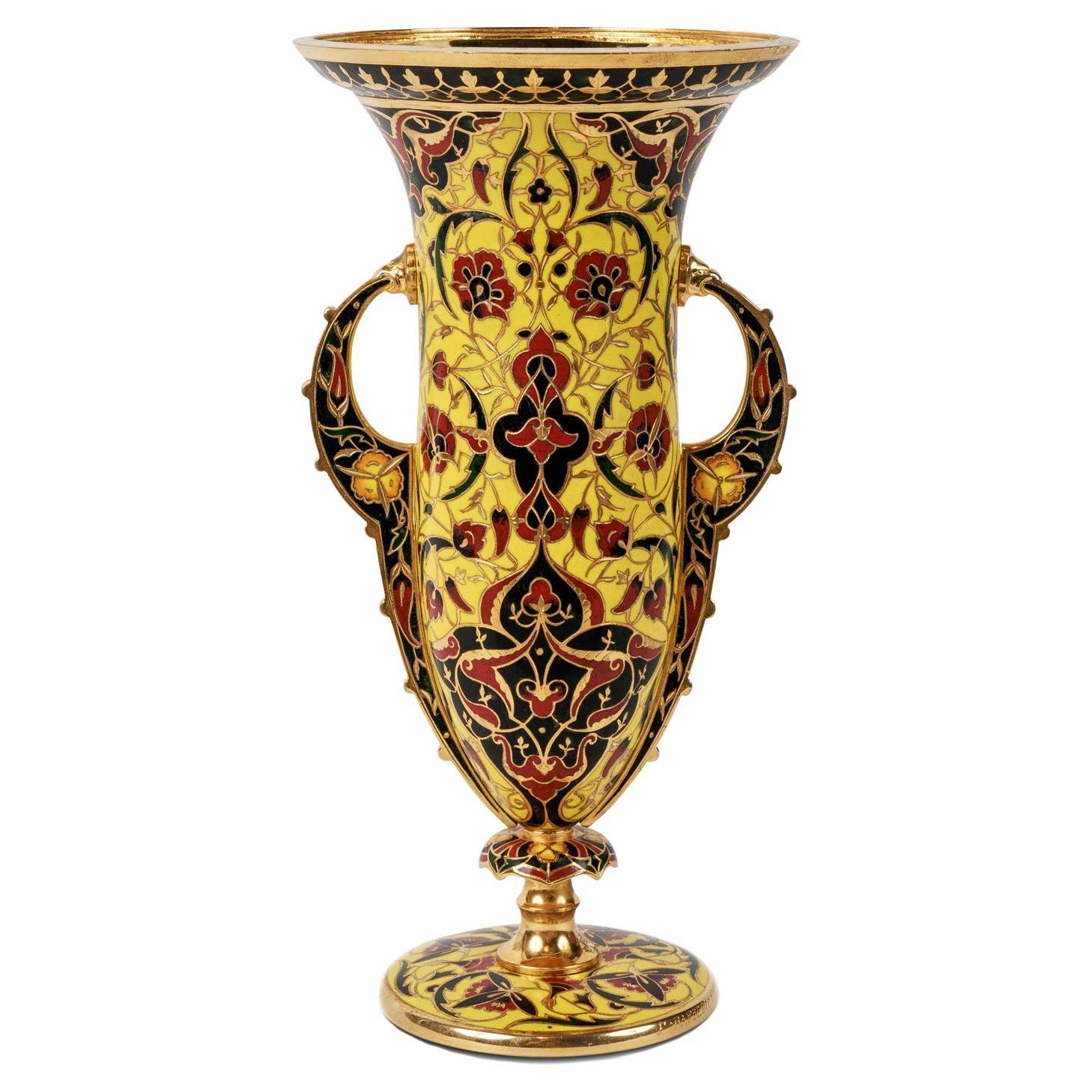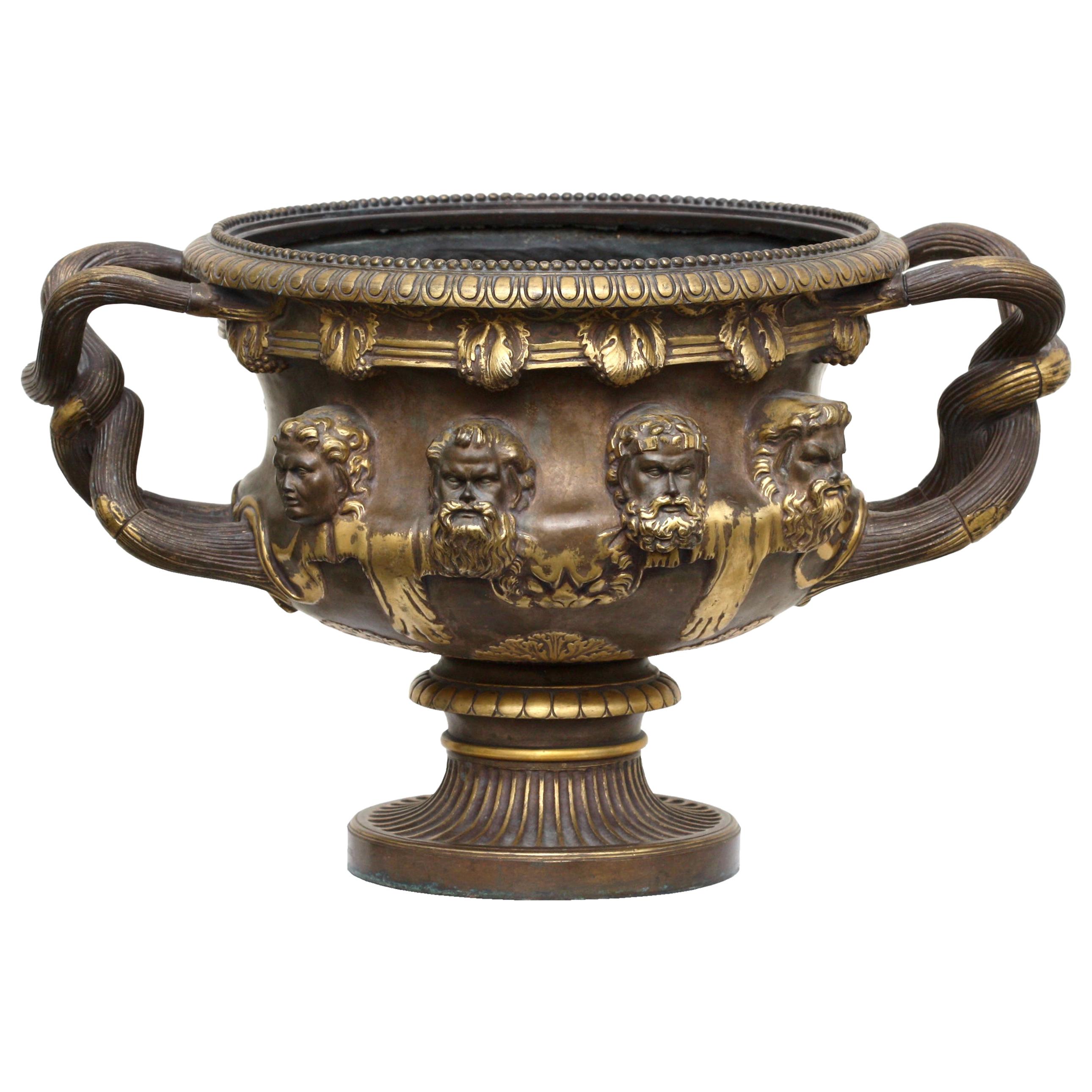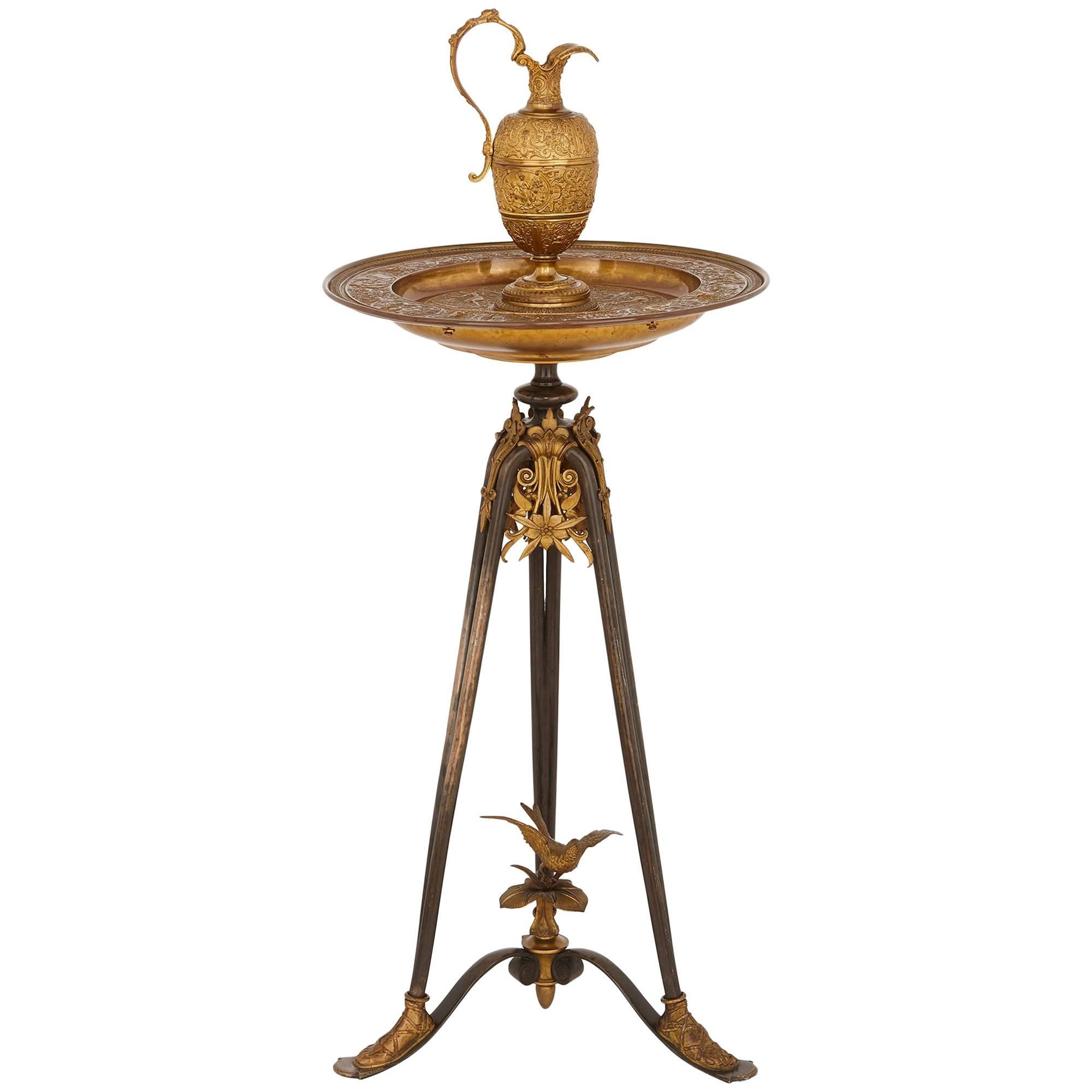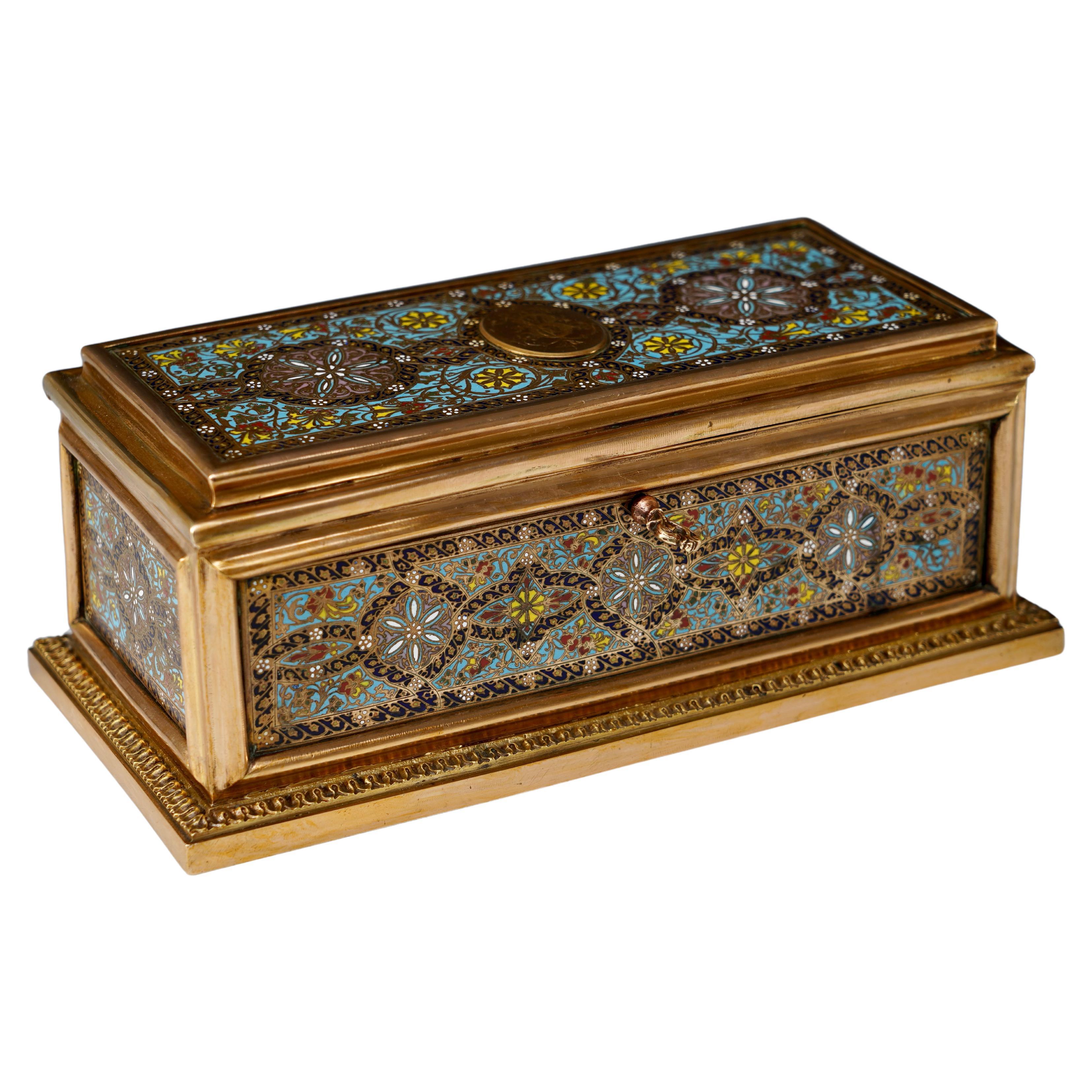Items Similar to Charming enamel and gilded Bronze Ewer by F. Barbedienne, France, circa 1870
Want more images or videos?
Request additional images or videos from the seller
1 of 8
Charming enamel and gilded Bronze Ewer by F. Barbedienne, France, circa 1870
About the Item
Signed F. Barbedienne & Cie
Height : 31,5 cm (12,4 in.) ; Width : 12 cm (4,7 in.) ; Depth : 10,5 cm (4,1 in.)
Charming baluster-shaped ewer in gilded bronze decorated with red and blue polychrome cloisonné enamel. Two beaded handles connect the body to the slender neck, ending in a flared pouring spout, and it rests on a circular piedouche. The whole is decorated with abundant engraved decoration of foliage interlacing.
Barbedienne and the Cloisonné enamel :
Ferdinand Barbedienne continuously innovated and he revived the use of enamel on art works during the second half of the 19th century. The Sèvres Manufacture enamel workshop had ever tried it in 1854-1855, but Barbedienne was the one who succeeded to join enamel to an industrial decorative objects production. From 1858 “At Mr Barbedienne’s, enamels in copper ornaments have got their former prestige back” (Les bronzes de la Maison Barbedienne, C. Simon, in L’Art du XIXe siècle, 1858, n°21, p. 252). The Barbedienne Company had now an enamel workshop where objects ornamented with oriental style or medieval style enamels were made. Four years after, Barbedienne’s cloisonné opaque enamels are noticed during the 1862 Universal Exhibition. Barbedienne was awarded three medals in three different categories : ‘Furniture’, ‘Silversmith work’ and ‘Artistic bronzes’ especially for the combination of bronze with enamel (oriental style cup, Compiègne Castle, Inv. C. 71-122).
The technique used to make these vases is different from the traditional one used for cloisonné enamel. In fact in Barbedienne’s productions the cloisonné is not welded to the object but is directly cast with it. The cloisonné forms part of the object and this innovation enabled to have a more refined and softer decoration.
The colors used by the Barbedienne Company also relate to the success of its enamels and the shades are praised as they “have more than the others these qualities of sparkle and richness that the range of colors of Gothic and Chinese enamellers also have” (in Gazette des Beaux-Arts, 1er décembre 1862, p. 542). This was made to create original enamelled creations either with Chinese or Japanese inspiration with a naturalistic decoration, or with Persian or Indian inspiration with a more stylized decoration.
Biography :
Ferdinand Barbedienne (1810-1892) : he created and headed at n°30 boulevard Poissonnière in Paris one of the most famous 19th century artistic bronze casting companies. Awarded with two Council Medals at the 1851 London Universal Exhibition, the Barbedienne companie won at the 1855 Paris Universal Exhibition a medal of honour and eleven cooperator’s medals for the work of his co-workers, such as his designer Louis-Constant Sévin (1821-1888) and his chaser Désiré Attarge (c.1820-1878). At the London Universal Exhibition of 1862 Barbedienne won medals in three different categories : ‘Furniture’, ‘Silversmith work’ and ‘Artistic bronzes’, combining for some pieces with onyx marble and enamel. Barbedienne was not only, with the Parisian silversmith Christofle, one of the leaders of the French Aesthetic Movement in decorative arts, but also the first artist to produce the famous cloisonné enamels (see « L’émaillerie moderne », Gazette des Beaux-Arts, Alfred Darcel, t. XXIV, janv.-juin 1868, p° 75-84). At the 1867 Universal Exhibition in his capacity as member of and speaker for the Jury, he was non-contestant, but exhibited nevertheless with great success cloisonné and champlevé enamelled pieces. Barbedienne was made an Officer of the Légion d’Honneur in 1867 and Commander in 1878 when he was compared with “a prince of industry and the king of bronze casting”. His glory did not decline with the passage of the time for at the Universal Exhibition of 1889 the critics thanked Barbedienne for the example he set for other bronze-casters by the perfection of his bronzes.
Bibliography :
– L’Art en France sous le Second Empire, Exposition Grand-Palais, Paris, 1979, p. 148-149.
– L’émaillerie moderne, Alfred Darcel, in Gazette des Beaux-Arts, t. XXIV (janvier-juin1868), p. 76.
– De l’Impresionisme à l’Art Nouveau – Acquisitions du Musée d’Orsay 1990-1996, Exposition Musée d’Orsay, Paris, 1996, p. 91.
– Les bronzes de la Maison Barbedienne, C. Simon, in L’Art du XIXe siècle, 1858, n°21, p. 252.
– Gazette des Beaux-Arts, 1er décembre 1862, p. 542.
- Creator:Ferdinand Barbedienne (Metalworker)
- Dimensions:Height: 12.41 in (31.5 cm)Width: 4.73 in (12 cm)Depth: 4.14 in (10.5 cm)
- Style:Napoleon III (Of the Period)
- Materials and Techniques:
- Place of Origin:
- Period:
- Date of Manufacture:Circa 1880
- Condition:Wear consistent with age and use.
- Seller Location:PARIS, FR
- Reference Number:1stDibs: LU3860338658802
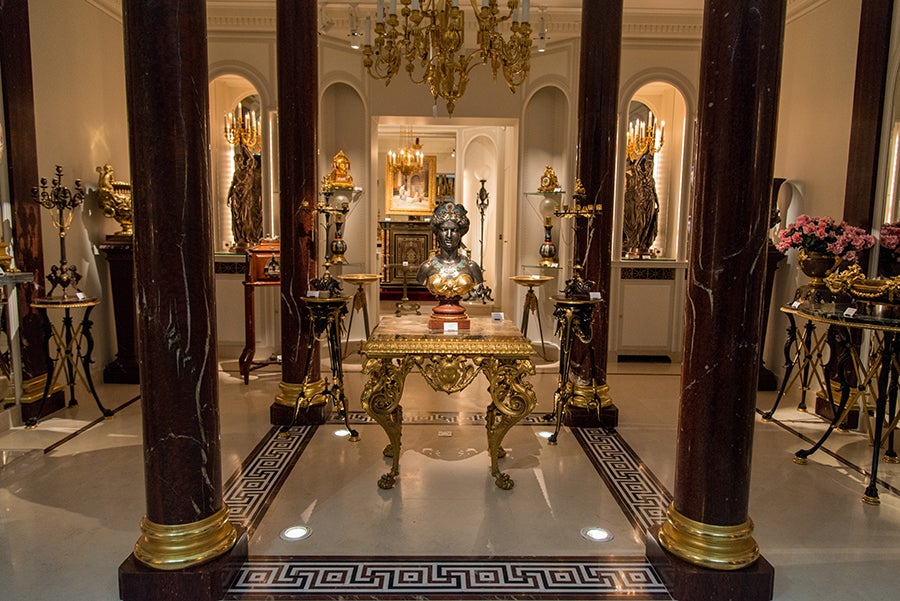
About the Seller
4.9
Vetted Seller
These experienced sellers undergo a comprehensive evaluation by our team of in-house experts.
Established in 1997
1stDibs seller since 2018
74 sales on 1stDibs
Typical response time: <1 hour
Associations
International Confederation of Art and Antique Dealers' Associations
- ShippingRetrieving quote...Ships From: PARIS, France
- Return PolicyA return for this item may be initiated within 7 days of delivery.
More From This SellerView All
- Charming Enameled and Gilded Bronze Casket by Tahan, France, Circa 1870By Tahan ParisLocated in PARIS, FRSigned Tahan, Boult des Italiens 11 A lovely rectangular casket made in gilded bronze, entirely decorated with polychrome “champlevé” enamel rosettes and stylized flowers, and embel...Category
Antique 1870s French Decorative Boxes
MaterialsEnamel, Bronze
- Pair of Small Cloisonné Enamel Vases by F. Barbedienne, France, Circa 1880By Ferdinand BarbedienneLocated in PARIS, FRSigned F. Barbedienne on the mount. Charming pair of small curved-shaped vases in patinated and gilded bronze and polychrome cloisonné enamel decorated with flowers and birds. With ...Category
Antique 1880s French Japonisme Vases
MaterialsBronze, Enamel
- Large Neo-Greek Vase by F. Levillain & F. Barbedienne, France, circa 1890By Ferdinand Levillain, Ferdinand BarbedienneLocated in PARIS, FRImportant neo-Greek vase in the shape of an Amphora, made in two patina bronze. The body is decorated with a rich continuous frieze in bas-relief presenting a procession of characters carrying their offerings to the temple, underlined by a decoration of theatrical masks among olive trees. The 's'-scroll handles decorated with grape vines, resting only on the shoulder of the vase, are supported by a ram’s head. Numerous palmettes and friezes adorn the whole. Resting on a molded marble circular base. Biography Ferdinand Levillain (Paris, 1837-1905) studied under the sculptor Jouffroy (1806-1882), before making his debut in 1861 at the French Artists Salon where he continued to exhibit until 1903. At the 1867 Universal Exhibition in Paris, he was praised for a Neo-Greek style bronze cup he made for the firm Blot and Drouard. He was not to become really famous, however, until 1871 thanks to his association with the great bronze founder Ferdinand Barbedienne, who began to exhibit Neo-Greek style lamps...Category
Antique 1890s French Greek Revival Vases
MaterialsMarble, Bronze
- Pair of Neo-Greek Amphora Vases by Barbedienne and Levillain, France, circa 1880By Ferdinand Levillain, Ferdinand BarbedienneLocated in PARIS, FRPair of Greek style vases made two patina bronze. Each, designed in the shape of a tripod amphora adorned with Hercules heads, is decorated in low-relief...Category
Antique 1880s French Greek Revival Vases
MaterialsGriotte Marble, Bronze
- Pair of Neo-Greek Andirons by F. Barbedienne, France, Circa 1870By Ferdinand BarbedienneLocated in PARIS, FRMeasures: Height : 47 cm (18,5 in.) ; Width : 70 up to 96 cm (27,5 – 37,8 in.) ; Depth : 6 cm (2,3 in.) A rare pair of square shaped andirons, made in gilded bronze and polychrome...Category
Antique 1870s French Greek Revival Fireplace Tools and Chimney Pots
MaterialsBronze, Enamel
- Fine Pair of Neo-Greek Vases by F. Levillain and F. Barbedienne, France, c. 1890By Ferdinand Levillain, Ferdinand BarbedienneLocated in PARIS, FRSigned F. Levillain sculpteur and F. Barbedienne. Pair of Greek style vases made of two patina bronze. Each, designed in the shape of a amphora resting on four hoof feet and a quadrilobed base, is decorated in low-relief with ancient times scenes of grape harvest and picking hops. Overleaf vases, profiles of gods Ariadne and Bacchus are ornated with grape vines and cornucopias. The handles are supported by two bearded heads of gods. Here is the model titled Amphore vendangeurs, modèle n°1 (68 cm), edited by Barbedienne after 1891. We find it in the catalogs until 1911. The figure of Bacchus is a subject dear to Ferdinand Levillain, which he exhibited bronze medallions in his first exposition as well as Universal Exhibitions in which he participated. Ferdinand Levillain (Paris, 1837-1905) studied under the sculptor Jouffroy (1806-1882), before making his debut in 1861 at the French Artists Salon where he continued to exhibit until 1903. At the 1867 Universal Exhibition in Paris, he was praised for a Neo-Greek style bronze cup he made for the firm Blot and Drouard. He was not to become really famous, however, until 1871 thanks to his association with the great bronze founder Ferdinand Barbedienne, who began to exhibit Neo-Greek style lamps...Category
Antique 1890s French Greek Revival Vases
MaterialsBronze
You May Also Like
- Ferdinand Barbedienne, a French Ormolu and Champleve Enamel Jardiniere, C. 1870By Ferdinand Barbedienne, Louis-Constant SevinLocated in New York, NYFerdinand Barbedienne, A French Ormolu and Champleve Enamel Jardiniere, C. 1870, The Design Attributed to Louis Constant Sevin. An exceptional qualit...Category
Antique 19th Century French Napoleon III Decorative Bowls
MaterialsBronze, Enamel, Ormolu
- Ferdinand Barbedienne, A French Ormolu and Champleve Enamel Jardiniere, C. 1870By Louis-Constant Sevin, Ferdinand BarbedienneLocated in New York, NYFerdinand Barbedienne, A French Ormolu and Champleve Enamel Jardiniere, C. 1870, The Design Attributed to Louis Constant Sevin. An exceptional qualit...Category
Antique 19th Century French Napoleon III Planters, Cachepots and Jardini...
MaterialsBronze, Enamel, Ormolu
- Ferdinand Barbedienne, A French Ormolu and Champleve Enamel Vase, C. 1870By Ferdinand BarbedienneLocated in New York, NYFerdinand Barbedienne, A French Ormolu and Champleve Enamel Vase, C. 1870 In the Islamic / Alhambra taste. The two handled vase in Alhambra form, enameled in rich yellow throughout ...Category
Antique 19th Century French Napoleon III Vases
MaterialsBronze, Ormolu, Enamel
- Bronze and Gilt-Bronze 'Warwick' Vase by Barbedienne, Paris, circa 1870By Ferdinand BarbedienneLocated in West Palm Beach, FLA bronze and gilt bronze 'Warwick' vase by Barbedienne, Paris, circa 1870, modeled after the original, the masks between the entwined vine handles, egg-and-dart rim, with grapevine d...Category
Antique 1870s Vases
MaterialsBronze
- Gilt and Patinated Bronze Ewer on Stand, Attributed to BarbedienneBy Ferdinand BarbedienneLocated in London, GBThe exceptional bronze casting, in stunningly intricate detail, on this beautiful sculptural piece has been attributed to master metalworker Ferdinand Barbedienne. The piece takes th...Category
Antique Late 19th Century French Neoclassical Mounted Objects
MaterialsOrmolu, Bronze
- F. Barbedienne, A Suite of Three French Ormolu and Champleve Enamel JardinieresBy Ferdinand BarbedienneLocated in New York, NYFerdinand Barbedienne, An Exquisite Suite of Three French Ormolu and Champleve Enamel Jardinieres / Garniture C. 1870, The Design Attributed to Louis Constant Sevin. Comprising of t...Category
Antique 19th Century French Napoleon III Planters, Cachepots and Jardini...
MaterialsBronze, Enamel, Ormolu
Recently Viewed
View AllMore Ways To Browse
Decorative Arts Inv
Crystal La P
Pink Japanese Art Glass Vase
Japanese Wabi Sabi Pot
Elisabeth Han
Tall Foliage Ceramic Vase
Ism Haller
Rene Lalique Oran
Lare Glass Vase
Pattern Vase
Modern Decorative Crystal
Pair Glazed Vases
Germany Vase Vintage Ceramic
Korean Ceramic Vessel
Sign Vallauris Vases
Blue White Vase Panel
Mid Century Italy Numbered Vase
Shiny Red Object
